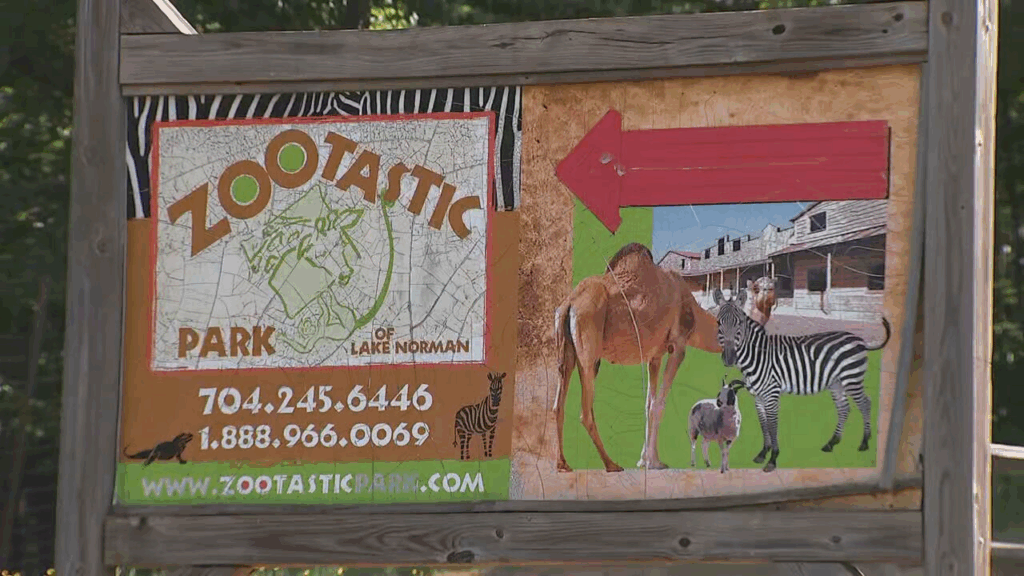Concerns over the welfare of animals at Zootastic Park in North Carolina have been building for years, with repeated USDA citations, reports from PETA, and troubling visitor accounts fueling public scrutiny. The facility, often criticized as a “roadside zoo,” has faced fines, official warnings, and a long record of violations under the federal Animal Welfare Act (AWA). While management has attempted to defend its practices and point to more recent clean inspection reports, the park’s history continues to raise red flags for animal advocates and visitors alike.
Zoos and roadside attractions across the country face increasing calls for accountability, and Zootastic Park is a case study in how inadequate oversight and substandard care can put both animals and the public at risk.
A History of USDA Citations
The U.S. Department of Agriculture (USDA) has repeatedly cited Zootastic Park for violations of the Animal Welfare Act. Issues range from inadequate veterinary care and unsafe enclosures to unsanitary conditions and improper handling of animals.
Inadequate Animal Care
- Neglected injuries: In 2021, inspectors found goats with obvious limps that went untreated, leaving the animals in pain for extended periods.
- Improper veterinary oversight: On multiple occasions, staff reportedly administered medication without veterinary direction or failed to accurately communicate the severity of an animal’s condition to licensed professionals.
- Cold weather neglect: In 2022, PETA reported that primates—including lemurs and monkeys—were left outdoors in freezing temperatures without heat sources. A De Brazza’s monkey and a capuchin monkey developed frostbite so severe that portions of their tails had to be amputated.
- Big cat cubs: Past citations also highlight poor care for vulnerable cubs, including untreated infections, bleeding injuries, and public exhibition of animals with contagious ringworm.
These reports reflect more than isolated oversights; they point to a pattern of systemic failures in animal care and facility management.
Substandard and Unsafe Enclosures
Animal welfare is not only about veterinary care but also about the environments in which animals live. Zootastic has faced consistent criticism for the conditions of its enclosures.
- Filthy conditions: Inspectors noted feces-coated primate enclosures and fly infestations in food preparation areas.
- Unsafe environments: A young howler monkey was once found exposed to a live electrical cord inside its habitat.
- Public safety risks: In 2019, the park was cited for allowing a 6-month-old tiger on a leash to interact with the public without proper barriers, creating a dangerous scenario for both visitors and the animal.
- Escape incidents: Several animals, including goats, monkeys, and a kinkajou, have escaped their enclosures. The kinkajou’s escape ended in its death, highlighting the potentially deadly consequences of poor enclosure design.
Visitor Accounts and Management’s Response
Public reviews and firsthand accounts add another layer to the controversy.
- Positive reviews: Some visitors have described the park as clean, family-friendly, and home to animals that appear healthy and well cared for.
- Negative reports: Others paint a very different picture, noting filthy enclosures and lethargic or distressed animals. In 2020, a visitor reported seeing a monitor lizard lying lifeless in an unclean habitat.
- Management’s defense: Zootastic officials have sometimes responded directly to criticism, pointing to recent “clean” USDA inspection reports or attributing cleanliness problems to staffing shortages.
This divide between glowing visitor reviews and troubling inspection reports underscores the inconsistency in Zootastic’s operations—and fuels the “roadside zoo” label that critics often apply.
The “Roadside Zoo” Debate
Zootastic Park is not accredited by the Association of Zoos and Aquariums (AZA), the leading organization for zoological facilities that meet higher standards for animal welfare, conservation, and education. Instead, Zootastic has been repeatedly labeled a roadside zoo—a term used to describe small, privately run facilities that prioritize entertainment and profit over science-based animal care.
Animal welfare groups argue that roadside zoos operate with minimal accountability and often put animals at risk. Zootastic’s long history of citations, fines, and public safety incidents fits this pattern, raising the question of whether such facilities can truly meet the needs of the animals they display.
Is Zootastic Improving?
Recent USDA inspections have shown no new violations, which the park uses to defend its reputation. However, advocates warn that past issues cannot be dismissed so easily. A 2024 news report noted that even with some improvements, inspectors continued to find problems with animal injuries and cleanliness during multiple visits.
The underlying concern is whether these “clean reports” reflect lasting changes or temporary compliance after years of repeat offenses. For many animal welfare supporters, the record speaks for itself: Zootastic Park has a long way to go before earning public trust.
Why This Matters
Facilities like Zootastic Park highlight the urgent need for stronger enforcement of the Animal Welfare Act and more transparency in zoo operations. As long as repeat violators continue to operate with minimal penalties, animals remain vulnerable to neglect, unsafe conditions, and exploitation for profit.
For visitors, the controversy serves as a reminder to research and support only reputable, accredited facilities that prioritize conservation, education, and genuine animal welfare. For policymakers, it is a call to strengthen oversight of roadside zoos and hold chronic offenders accountable.
To learn more about animal welfare in roadside zoos and how you can take action, visit Sustainable Action Now’s Zoos section.
✅ Sustainable Action Now’s stance: Zootastic Park’s history is a stark reminder that repeated citations, fines, and animal suffering cannot be excused by occasional clean inspections. True change means prioritizing animal welfare above entertainment value—and until then, the park’s reputation as a “roadside zoo” remains well-earned.


